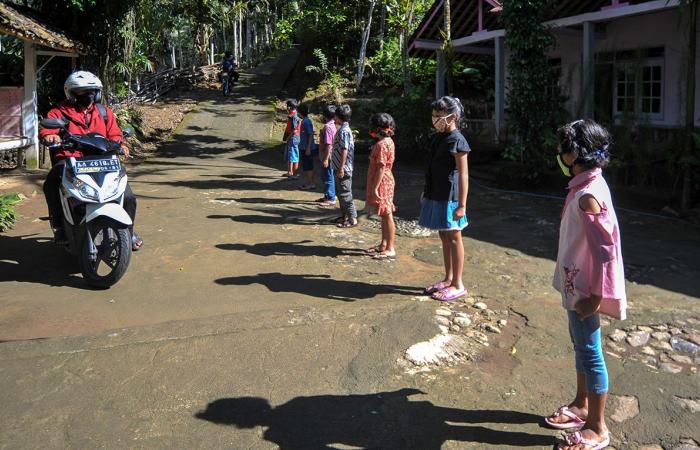Thank you for reading the news about Not a minor problem: Children in Indonesia most vulnerable to COVID-19 and now with the details
Jeddah - Yasmine El Tohamy - JAKARTA: Schools in Indonesia will not be opening anytime soon, with 94 percent of students across the country living in areas with a moderate to high risk of coronavirus disease (COVID-19) infections, and over 6,000 children said to have been exposed to the disease.
In a virtual press conference on Monday, Education Minister Nadiem Makarim said that the school year would start on schedule in July, but students would have to study from home, adding that only schools in the green zone, or regions where the infection cases are low, could reopen for the new academic year.
“Only six percent of our students live in the green zone — 85 regions and cities — where schools can gradually reopen. But they will need their parents’ consent to go back studying in school,” Makarim said.
The announcement came after the Indonesian Pediatric Society (IDAI) advised in late May against the reopening of schools at least until December this year after regional governments across Indonesia started to ease some restrictions and reopen the economy.
“They need to clearly explain to the parents that their children will still be exposed to the risk of infections. Assigning zones can be very dynamic — today a region may be a green zone, but it could change anytime,” IDAI Chairman Aman Pulungan told Arab News.
“We can consider reopening schools when there are no new COVID-19 cases in a month, and no movement of people in and out of the region.”
As of Monday, there were 1,017 new infections and 64 deaths reported in the country, increasing the national total to 39,294 cases and 2,198 deaths.
About 3,000 people below the age of 18 had contracted the virus, 7.8 percent of the national tally, while around 3,400 minors were being treated, according to data from the COVID-19 national task force.
The data also showed that 550 minors had died, out of which 353 were under five years old.
“The number of children who contracted COVID-19 and who died from it continues to increase every week. We should not let even one child die,” Pulungan said, adding that an average of four percent of children who tested positive for the virus died every week, and that the figure of those who had died while undergoing treatment was even higher.
Even before the pandemic, Indonesian children were already exposed to several health issues such as malnutrition, with the World Health Organization (WHO) listing Indonesia among countries with the highest prevalence of stunted growth. In 2019, the prevalence was 27 percent, still well above the WHO standard of 20 percent.
“The comorbidities found in adults are found in children, too, but many Indonesian children also suffer from diarrhea, dengue fever, tuberculosis, and malnutrition,” Pulungan said.
Data from the Ministry of Health showed that 17.7 percent of Indonesian children below five years of age suffered from malnutrition, making their immune systems even more at risk from COVID-19.
“The government needs to beef up its efforts in preventing children from contracting the coronavirus and treating those exposed to the disease,” Susanto, chairman of the Indonesian Commission for Child Protection, told Arab News.
These were the details of the news Not a minor problem: Children in Indonesia most vulnerable to COVID-19 for this day. We hope that we have succeeded by giving you the full details and information. To follow all our news, you can subscribe to the alerts system or to one of our different systems to provide you with all that is new.
It is also worth noting that the original news has been published and is available at Arab News and the editorial team at AlKhaleej Today has confirmed it and it has been modified, and it may have been completely transferred or quoted from it and you can read and follow this news from its main source.

